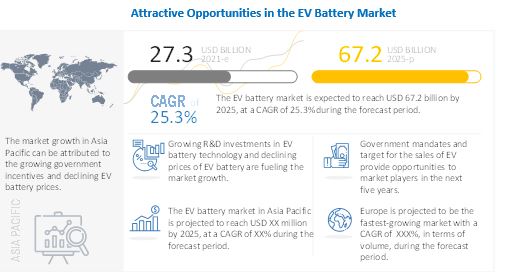Boomtimes in Batteries
It’s a great time to be a battery maker: The world could see 145 million electric vehicles on roads by 2030, versus 10 million in 2020, according to the International Energy Agency. Buyers registered 3 million new EVs globally last year. Those cars were stuffed with 134.5 gigawatt-hours of batteries — a 40 percent jump in one year, according to Adamas Intelligence. Proliferation aside, many EVs require ever-larger batteries to meet consumer demands for driving range, zippy performance, and now SUV size and utility. Ryan Castilloux, managing director of Adamas Intelligence, says COVID-19 barely dented mushrooming growth: “Through five months of 2021, the total auto battery capacity deployed on the world’s roads is greater than all of 2018.”
Big Players Dominate
Just six companies—BYD, CATL, LG Energy Solution, Panasonic, Samsung SDI, and SK Innovation—were responsible for supplying 87 percent of batteries and battery metals in passenger EVs in the second half of 2020. Tesla’s deployment of 22.5 gigawatt-hours of batteries in that period was nearly as much as its five closest competitors combined: China’s BYD, Hyundai, Mercedes, Renault, and Volkswagen. What Castilloux calls a “tsunami of demand” has put unprecedented pressure on battery- and motor-material supply chains, sparking a surge in prices for lithium, nickel, cobalt, neodymium, praseodymium, dysprosium, and terbium.
Meeting Demand
Will the EV battery world be able to meet the EV demand? To have any shot, the United States alone may need 20 to 40 gigafactories over 15 years, with a combined terawatt of new battery capacity, to meet projected demand, says Venkat Srinivasan, director of the Argonne Collaborative Center for Energy Storage Science. “Right now, the United States doesn’t have enough materials to do that, so materials substitution and recycling will be key to get this to go,” Srinivasan says.
Racing to counter Asia’s dominance, General Motors is building factories in Ohio and Tennessee with a combined 70-gigawatt capacity, double that of Tesla’s Nevada gigafactory. Ford plans to scale up 140 GW of capacity in North America by 2030 (and 240 GW globally), in partnership with South Korea’s SK Innovation. Ford figures that’s about six plants’ worth of homegrown capacity, and 10 globally.
Old Tech, New Tricks
Once seen as yesterday’s news, lithium iron phosphate (LFP) batteries are booming—especially in China, where Contemporary Amperex Technology Co. (CATL), now the world’s largest battery company, supplies LFP packs for Tesla’s Model 3 Standard Range. Elon Musk made news recently by suggesting that Tesla is making a long-term shift toward cheaper, zero-cobalt LFP. “This is actually good because there’s plenty of iron in the world,” he said.
LFP still makes up less than 10 percent of all Li-ion cells, but Castilloux said its global deployment soared more than 600 percent in the second half of 2020. LFP is less energy dense than nickel-rich cells, but its cathode material costs less. To help address efficiency handicaps, “cell-to-pack” construction forgoes the use of myriad cylindrical cells arranged in modules. Larger, prismatic cells integrate directly in packs, which saves space, reduces component count, and simplifies cooling and connections. “The pack is essentially one large module,” Castilloux says. China’s best-selling EV, the US $4,500 Wuling Mini, uses LFP packs by producers such as Hefei. Srinivasan says that LFP appears ideal for some applications. “A cheaper car with LFP that will last a long time and go maybe 150 miles is not bad,” he says. Castilloux agrees that a global trend is emerging, with automakers—including General Motors, Tesla, and Volkswagen—adopting nickel-rich chemistries for longer-range or performance cars, and LFP for entry-level models.
Explosive Growth
Contemporary Amperex Technology and LG Energy Solution’s staggering growth rates from 2016 to 2020 are not typos, including CATL’s 3,400 percent leap. What Goldman Sachs dubs a “commodity supercycle” may put rare, prolonged strain on supply chains and prices for lithium and rare metals. Governments and consumers will also have a big say when it comes to ultimate EV adoption. But growth and government signals over a climate-change crisis suggest the boomtimes in batteries (see “Boomtimes in Batteries” [above or below TK]) are just beginning.
The Gold Standard, for Now
The race to boost battery nickel levels—and squeeze out pricey cobalt that’s often sourced in suspect conditions—has a leader in LG Energy Solution. The South Korean company’s potent NCMA cells (nickel, cobalt, magnesium, aluminum) will soon power Chinese-made Teslas and General Motors’ EV lineup, with an industry-best 88 percent nickel chemistry. Automakers adopting NCMA can stuff more energy and driving range into a given space, without major pack redesigns. Adamas Intelligence says that 60 percent of all passenger EV batteries deployed in 2020 featured high-nickel cells, such as NCA or NCM 6- to 8-series cells. For unproven NCMA tech, “China is the test ground and sandbox” before the cells trickle into Western markets, Castilloux says. SK Innovation—mimicking LG’s innovations, as usual—aims to put its NCMA cells into Fords. A small step below are NCM811 cells from players such as Contemporary Amperex Technology Co. (CATL), LG, and SK Innovation, with a roughly 8:1:1 ratio of nickel, cobalt, and manganese. One trick, Castilloux says, is to add nickel and curb cobalt while ensuring thermal stability, since fires are bad for business. Efficient manufacturing is another challenge, with CATL’s high-end cells currently showing dispiriting yields as the company ramps up production and processes. Currently, for every nickel-rich CATL cell produced, roughly one defective cell goes to the recycler, Castilloux says (that’s also bad for business). But with automakers eager to trumpet class-leading driving range or performance, advantages are clear: Battery cell densities have nearly tripled over the past decade, with leading chemistries now pushing past 300 watt-hours per kilogram.
https://spectrum.ieee.org/amp/the-top-10-ev-battery-makers-2654723215





